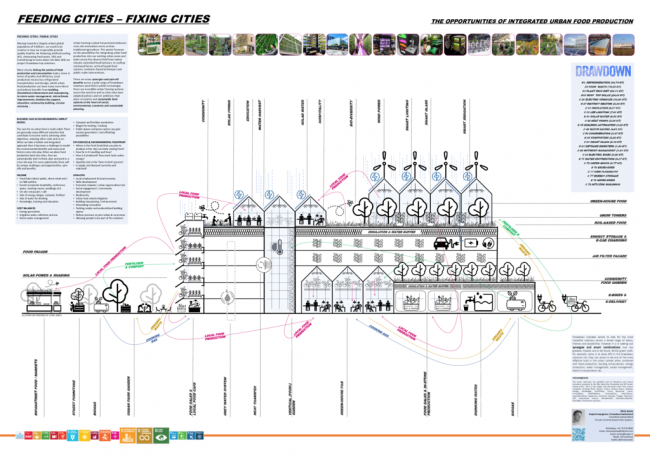As we move towards a global population of 9 billion + with our urban areas hosting most of the planets people, the need to be creative in providing quality food in a responsible way is ever greater. Reducing artificial cooling of buildings (#1), eliminating food waste (#3) and transitioning to more plant rich diets (#4) have been identified by project Drawdown (https://www.drawdown.org/solutions-summary-by-rank ) as the top ways to dramatically reduce global greenhouse gas emissions. Producing food closer to the point of consumption makes sense in terms of quality and efficiency. Local production means less refrigerated transportation and storage needs. At the same time, urban food production can have many more direct and indirect benefits from building (insulation) enhancement and repurposing, to storm water management, microclimate improvements, biodiversity support, education, community building, circular economy and more.
This poster will focus on the possibilities for integrating urban food production into our existing urban areas and took a look across this diverse field from indoor climate-controlled food factories, to rooftop soil-based farms, vertical façade food systems, container-based techniques and public realm interventions. The poster will illustrate synergies and spin-off benefits across a wide range of Drawdown Solutions.
There will be references to urban farming systems and cities across the world who have adopted policies and set ambitions that place circularity and sustainable food systems at the heart of their social, environmental, economic and sustainable planning. The poster will reference data from these systems and locations in reinforcement of the suggested opportunities and possibilities.


